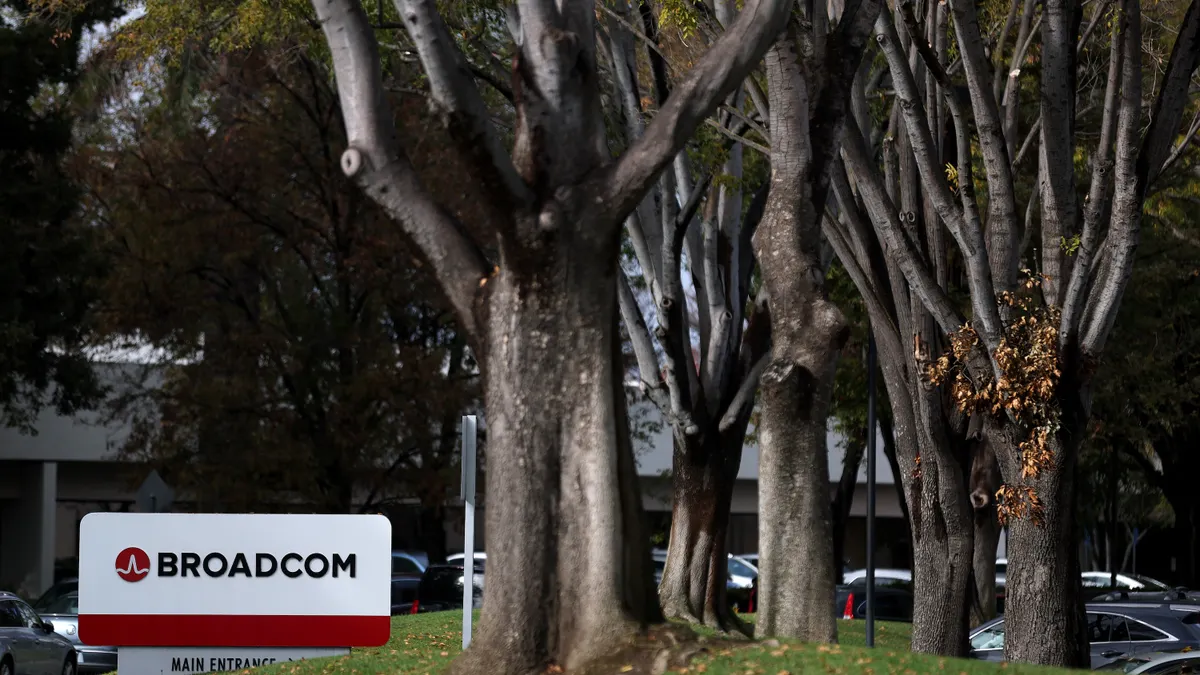The steady hum of a mainframe can host software dating back decades. Engineers who wrote the original code are no longer with the company, code books are nowhere to be found, yet critical applications are still running.
This is true at nearly two-thirds of large enterprises, which are running mainframe-based apps dating back 10 to 20 years, according to Advanced's Mainframe Modernization Business Barometer Report. Over a quarter of businesses feature applications that are between 20 or 30 years old. Some even harken back to the 1960s.
"We're talking typically about industries like financial services, insurance, utilities or government as being prime examples of having those applications that were built 30 or 40 years ago," said Andrew Bartels, VP and principal analyst at Forrester.
Despite the reliability of those applications, they tend to lack — on their own — the flexibility and portability of the cloud.
Managing aging applications in the mainframe and other legacy technologies means facilitating an efficient connection between software and the end user. But there are workarounds to transition aging, yet reliable, technology into a more modern environment. Containerization, AI assistance and careful migrations to the cloud are among the choices at hand for CIOs running legacy apps in the era of cloud.
Migrating or upgrading decades-old apps can be complex. Data suggests more modernization took place in 2020 than years prior, as businesses confronted the shifts in demand and operational disruption of the pandemic.
No matter how long an application has been running, skill shortages as technology ages or an inability to link the application with other key processes can drive a business to think about modernization, according to Bola Rotibi, research director, software development, at CCS Insight.
"When you're thinking about something that's actually … critical, you have to be thinking to yourself: Why are you losing it? Why are you moving it from that platform?"

Bola Rotibi
Research director, software development at CCS Insight
"When you're thinking about something that's actually … critical, you have to be thinking to yourself: Why are you losing it? Why are you moving it from that platform?" said Rotibi.
What makes a relic frail
Mainframe-based applications enjoy a sturdy reputation — and the data backs this up. Eight in 10 customers of IBM's mainframe offerings, for example, say their companies have achieved between 99.999% and 99.9999% uptime.
But loss of the necessary skills to support applications can spell trouble for the technology in the long term. Loss of necessary skills to operate the platform tops the list of concerns in a 2019 survey from LzLabs and Microsoft.
"People's skills are the biggest barrier and therefore the biggest driver for moving away from the platform," said Steve Brothers, president at Phase Change Software.
"There's no reason why mainframes don't stay around to the end of time."

Steve Brothers
President at Phase Change Software
The State of New Jersey collided with this barrier head on, as the COBOL-based application that powered its unemployment systems buckled under the pressure of last year's economic downturn. The technical problem prompted a plea from Governor Phil Murphy, who made a public call for COBOL experts to assist the state.
In most cases, technologists who created and maintained legacy systems have left their businesses, said Cameron Jenkins, EVP of application modernization at Advanced.
Legacy technology experts "are leaving and retiring in droves," Jenkins said. "And you better start training because, as they leave, you could be in a situation where your knowledge workers have left the building." The erosion of the code base and the inability to maintain them is what could create vulnerabilities.
Age and size can combine to make an application difficult to manage and maintain, said Brothers. Making a simple change in one place can have implications that echo throughout the rest of the code, especially as technologists deal with a database that spans millions of lines of code.
But a bigger problem with legacy apps is connecting it to more modern systems and interacting with customers or other platforms.
"That's where the focus has been," said Bartels. While businesses may be able to support legacy applications and keep them running reliably, the system wasn't "necessarily designed to support the new value proposition we want to offer to our customers, in terms of new channels."
Options for modernization
The workaround some organizations have turned to for their aging legacy applications is containerization.
Taking workloads into what's described as a container operation means the applications become portable and can be moved from one environment to another, said Bartels. "The core code still runs, but now runs in a container that can then be ported" to the cloud.
In some cases, applications can benefit from a hardware upgrade. Some organizations realized during the pandemic that their applications were running on machines that were five or six versions old and thus faced limitations, said Rotibi.
"We're talking typically about industries like financial services, insurance, utilities or government as being prime examples of having those applications that were built 30 or 40 years ago."

Andrew Bartels
VP and principal analyst at Forrester
Much like other aspects of IT, maintaining software applications is a task where AI can be of assistance. If the only feasible option is keeping the application running on the mainframe, AI tools could help understand the code base, improving maintenance.
"There's no reason why mainframes don't stay around to the end of time," said Brothers. "Mainframes are designed and built to do heavy transaction processing. While you can migrate it to another platform that might do it as well, you can't migrate it and have the same level of risk mitigation that you have on the mainframe."
But if a company finds itself keeping aging technology past its prime, to the point where it becomes a drain on a company's ability to innovate, it might indicate a broader problem in a company's IT strategy, according to Rotibi.
"Quite frankly, it should never get to that stage," said Rotibi. "One could argue that they should be monitoring that application on a regular basis."























